Introduction
As you embark on the journey to create a Magento e-commerce website, it's crucial to start with a clear vision of what you want to achieve. The initial planning stage should focus on pinpointing your business objectives, understanding your audience, and staying informed about the latest industry trends. Choosing the right Magento edition and hosting solution is equally important, as it can make all the difference in the reliability and scalability of your website.
When it comes to designing your Magento website, striking the balance between visual appeal and seamless user experience is essential. The development phase involves leveraging the flexibility of Magento to create a highly customizable and feature-rich online store. Quality assurance plays a crucial role in ensuring your website meets user expectations and industry standards.
Preparing for launch and marketing requires meticulous attention to detail, from rigorous testing to compelling content optimization and strategic marketing efforts. Optimizing your Magento website involves enhancing SEO tactics, diversifying content, and fortifying site security. Lastly, assembling a proficient Magento development team is pivotal to the success of your e-commerce website, whether you choose an in-house or outsourced approach.
By following these steps, you can position your Magento website for success in the competitive online marketplace.
Planning Your Magento Website
As you begin your journey to develop a Magento e-commerce platform that is not only visually attractive but also highly efficient, it's essential to start with a clear vision of what you aim to accomplish. The initial planning stage should focus on pinpointing your business objectives, which might include lead generation, sales, or increasing brand awareness. These goals will influence every decision in the web design process.
It's equally important to understand who your online platform will serve. By conducting an in-depth analysis of your audience's demographics, behaviors, and online activities, you can develop a customer persona that guides the creation of a website designed specifically for their needs. This approach is essential for attracting the right visitors and encouraging them to engage with your site's content, whether that's through making a purchase, signing up for a membership, or sharing on social media.
Moreover, staying informed about the latest industry trends is vital. For example, the transition to AI in web development is a noteworthy phenomenon that cannot be disregarded. AI can enhance the shopping experience by offering personalized content, which is a key factor in conversion rate optimization. Also, as users demand faster load times without compromising visual aesthetics, it's important to balance performance with innovative elements like bold typography and nature-inspired themes.
When evaluating web design agencies, look for a robust portfolio that showcases their ability to work across different industries and adapt to various design styles. Past client feedback can provide insights into the agency's reliability, customer service, and the quality of their outcomes.
Remember that the performance of your online platform is paramount. A high-performing online platform should facilitate easy updates, record data in analytics tools like Google Analytics, and meet all legal standards. These criteria are crucial for driving traffic, ensuring conversions, and avoiding unnecessary costs and legal risks.
In summary, effective planning for your e-commerce website involves setting clear objectives, understanding your audience, keeping abreast of design trends, and selecting a capable web design agency. By doing so, you position your e-commerce platform for success in the competitive online marketplace.
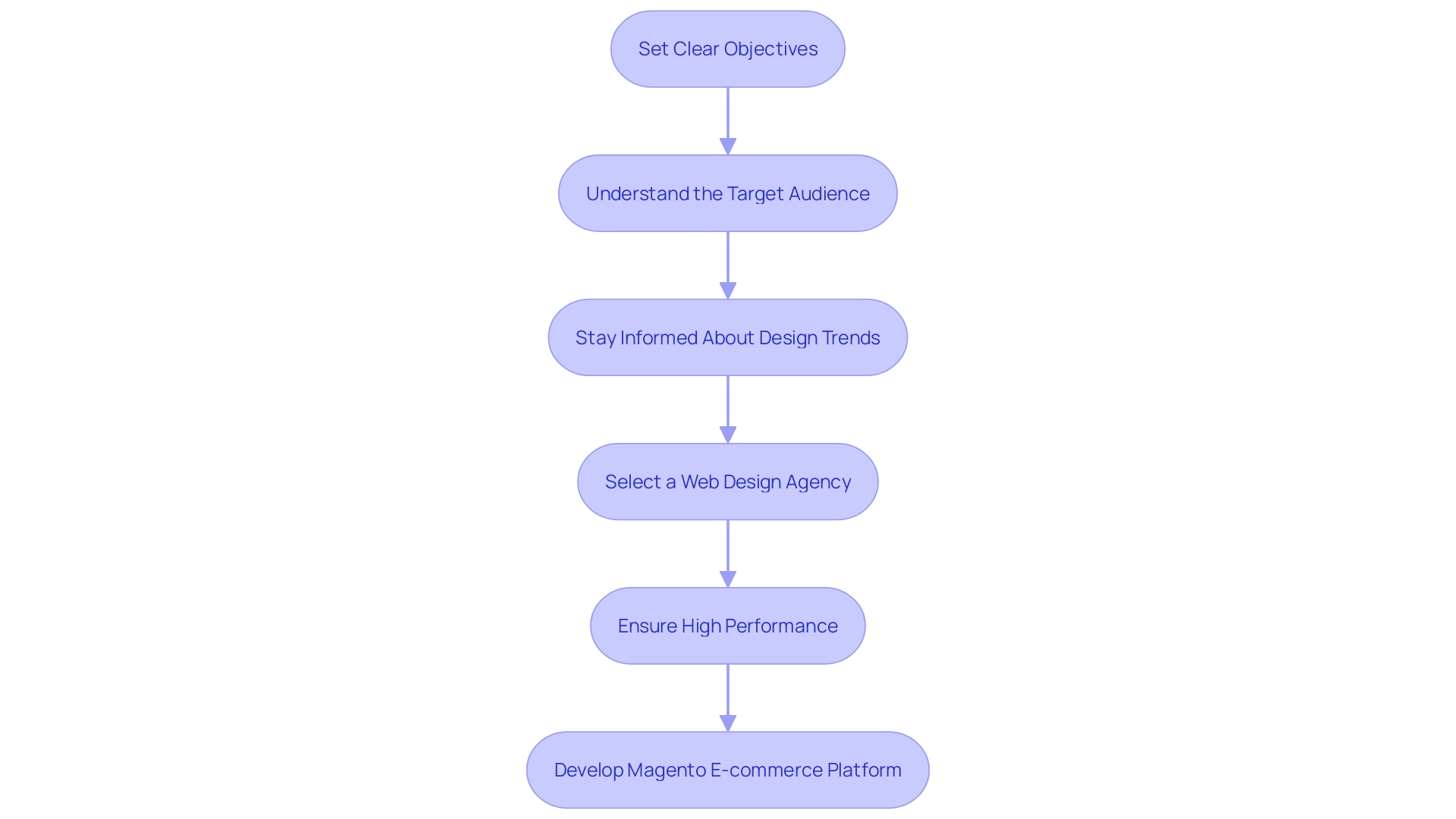
Choosing the Right Magento Edition and Hosting Solution
When embarking on the journey of establishing an ecommerce presence, the choice of the right platform and hosting can make all the difference. With its robust capabilities and scalability, this platform stands out as a choice worth considering. But within the offerings of this e-commerce platform, there are different editions, each tailored to specific business sizes and needs. It's essential to assess these editions against your business objectives to ensure you opt for the version that aligns with your growth plans and customer engagement strategies.
Similarly, hosting is not a one-size-fits-all solution. The reliability of your ecommerce site heavily depends on the hosting service's performance, particularly during high traffic periods. The story of Túlio and Eric's online store is a cautionary tale - their initial choice of a local hosting provider led to prolonged downtime and slow loading times, which are detrimental in the fast-paced world of online retail.
Web hosting services vary in setup, whether it's shared, dedicated, or cloud-based, each with its advantages and limitations. The decision should be reflective of your site's required resources, expected traffic, and the level of control you wish to maintain. A 24/7 support team is invaluable, as real-time assistance can be critical in resolving issues promptly, thereby minimizing any potential disruption to your business.
Moreover, the ecommerce landscape is continually evolving. With platforms like Shopify commanding significant market share and introducing innovative features, the competition is fierce. Shopify's impressive reach of over 4.3 million live sites and a 10.32% global market share highlights the platform's popularity. The flexibility and user-friendliness of such platforms can be attractive, especially for those looking to avoid the complexities of setting up and managing an ecommerce site. However, the adaptability and customizability of an open-source platform like [name of the platform] can provide a competitive edge by catering to unique business requirements.
Ultimately, the path to a successful ecommerce platform lies in careful consideration of your platform and hosting options. By understanding the nuances of each and selecting the combination that best suits your business's current and future needs, you can create a strong foundation for online retail success.
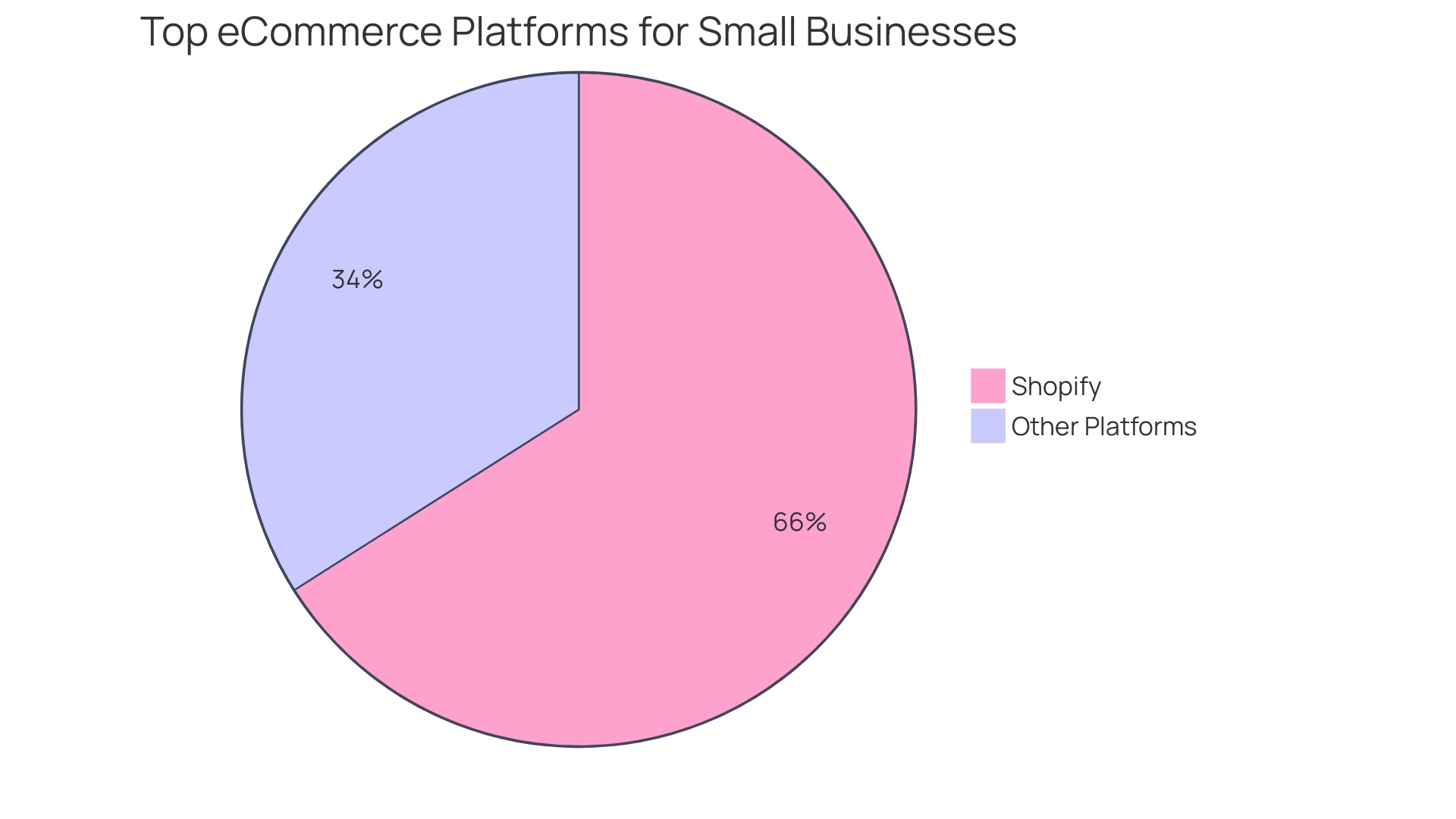
Designing Your Magento Website
Crafting a Magento platform that not only captivates individuals visually but also offers a seamless user journey is an art. In the realm of e-commerce, the design phase is critical, involving a combination of wireframes, visual elements, custom themes, and responsive designs. A website's aesthetic appeal is a powerful tool to engage and retain customers, but it's the underlying user experience that converts engagement into sales.
A striking case highlighting the importance of performance was Tulio and Eric's online store. Initially built on WordPress and hosted on a local server, the site suffered from slow load times and crashes during peak traffic, which ultimately affected their business. This underscores the importance of a reliable platform like Magento that can handle high traffic and ensure consistent uptime.
Sanofi's office showcases the fusion of aesthetics with functionality. By integrating diverse work and relaxation areas, focusing on accessibility, and incorporating a central 'Work Cafe,' the layout fostered productivity and collaboration. Similarly, a Magento website should combine visual appeal with functional layout, ensuring a space where users can easily navigate and interact with the brand.
Present web style trends, recognized by the agency Numiko, include layouts that have endured the test of time, now gaining popularity due to their use by industry giants like Apple. E-commerce is also seeing a shift away from minimalism towards bold typography, maximalism, and nature-inspired designs. These trends are coupled with a rising need to balance visual appeal with performance—faster loading times are a must for the modern consumer.
In 2024, artificial intelligence (AI) continues to shape e-commerce, creating tailored shopping experiences. As AI integrates into the fabric of e-commerce, it's crucial for Magento developers to leverage its potential to provide personalized experiences.
The Experience Honeycomb model, created by designer and information architect Peter Morville, offers a lens to assess and enhance the quality of interactions. It dictates that a digital product must be useful, addressing users' needs and pain points effectively. When it comes to creating an online store on the Magento platform, it is crucial to make sure that every component on the site has a specific function, thereby improving the overall shopping experience.
In summary, creating an e-commerce platform that is visually captivating and functionally powerful necessitates a thoughtful strategy. It must resonate with current design trends, leverage AI for personalization, and prioritize experience above all. By doing so, you can create a digital space that not only looks great but also performs exceptionally, ensuring your online store thrives in an ever-evolving digital marketplace.
Developing Your Magento Website
Starting the development of an e-commerce website is a journey that has evolved significantly over the years. From the rudimentary static HTML pages of the early web, we've witnessed a seismic shift towards dynamic, interactive web applications designed to meet sophisticated user needs and expectations. The platform itself is a reflection of this evolution, offering a system that's not just feature-rich but also highly customizable, allowing you to integrate third-party systems and tailor the shopping experience to your unique business requirements.
When you start building your e-commerce platform, keep in mind the success stories of companies such as Nets, who highlighted the significance of presenting technical information in a user-friendly and captivating way. Similarly, your focus should be on configuring the key features of the platform in ways that are both user-friendly and conducive to self-discovery. Take inspiration from the diverse entrepreneurial successes on platforms like Flipkart and Amazon, where innovation and customer-centric approach have proven to be pivotal in their growth.
While setting up your e-commerce platform, take into account the latest web development technologies and how they can be utilized to build an online store that not only distinguishes itself but also adequately caters to the requirements of an ever more demanding consumer base. The incorporation of CSS for styling, for example, has transformed the way we approach webpage design, enabling more creativity and personalization. With the platform, you have the freedom to extend this creativity even further with custom themes and extensions.
Staying informed about the most recent statistics and trends of the site is essential, as this knowledge can guide your development strategy. The knowledge shared by teams like 9cv9, with their extensive expertise in the startup and business tech industry, are priceless assets that can steer you towards crafting an online platform that is not only technically proficient but also in sync with the present e-commerce environment. Remember, the goal is not just to build an online store but to craft an immersive digital experience that captivates and retains customers.
Testing and Quality Assurance
Quality assurance (QA) in website development goes beyond a mere item on a checklist; it's a foundational element that underpins the success of your site. To eschew haphazard approaches, it's imperative to set clear, targeted objectives from the outset. For instance, pinpointing that every 100-millisecond delay in load time could potentially lead to a 1% drop in sales, as discovered by Amazon, demonstrates the critical nature of speed for e-commerce platforms. This becomes a tangible goal: optimizing for speed to drive sales.
Furthermore, discerning the specific quality parameters for your project is essential. This involves defining what quality means in the context of your audience's expectations. If the end-users of your e-commerce platform are customers, then a seamless shopping experience is non-negotiable.
In the domain of software testing, discrepancies between the expected and actual software performance are identified, ensuring the application's functionality aligns with its intended purpose. Software testing includes a variety of types, such as functional, performance, and acceptance testing, each playing its role in delivering a reliable and effective final product.
The significance of software testing is highlighted by the potential for finding bugs ranging from simple syntax errors to complex logical issues, which could lead to catastrophic system failures. Tackling these bugs early not only conserves resources but also averts the escalation of minor issues into larger problems.
As per insights from The Cyber Scheme, even for cyber security professionals embarking on a career in security testing, a structured approach to skill development is crucial to bridge the gap between academic knowledge and practical employer requirements.
Moreover, accessibility testing has become a critical aspect of QA, as outlined by The World Wide Web Consortium's principles. Despite common roadblocks such as time constraints and resource limitations, incorporating accessibility testing is not only about quality assurance but also about ensuring compliance with standards like WCAG and Section 508.
Considering the mentioned factors, Quality Assurance for your eCommerce platform is more than just resolving issues; it involves proactively establishing benchmarks and goals that align with customer expectations and industry standards, guaranteeing that every aspect of the user journey is taken into account and refined to excellence.
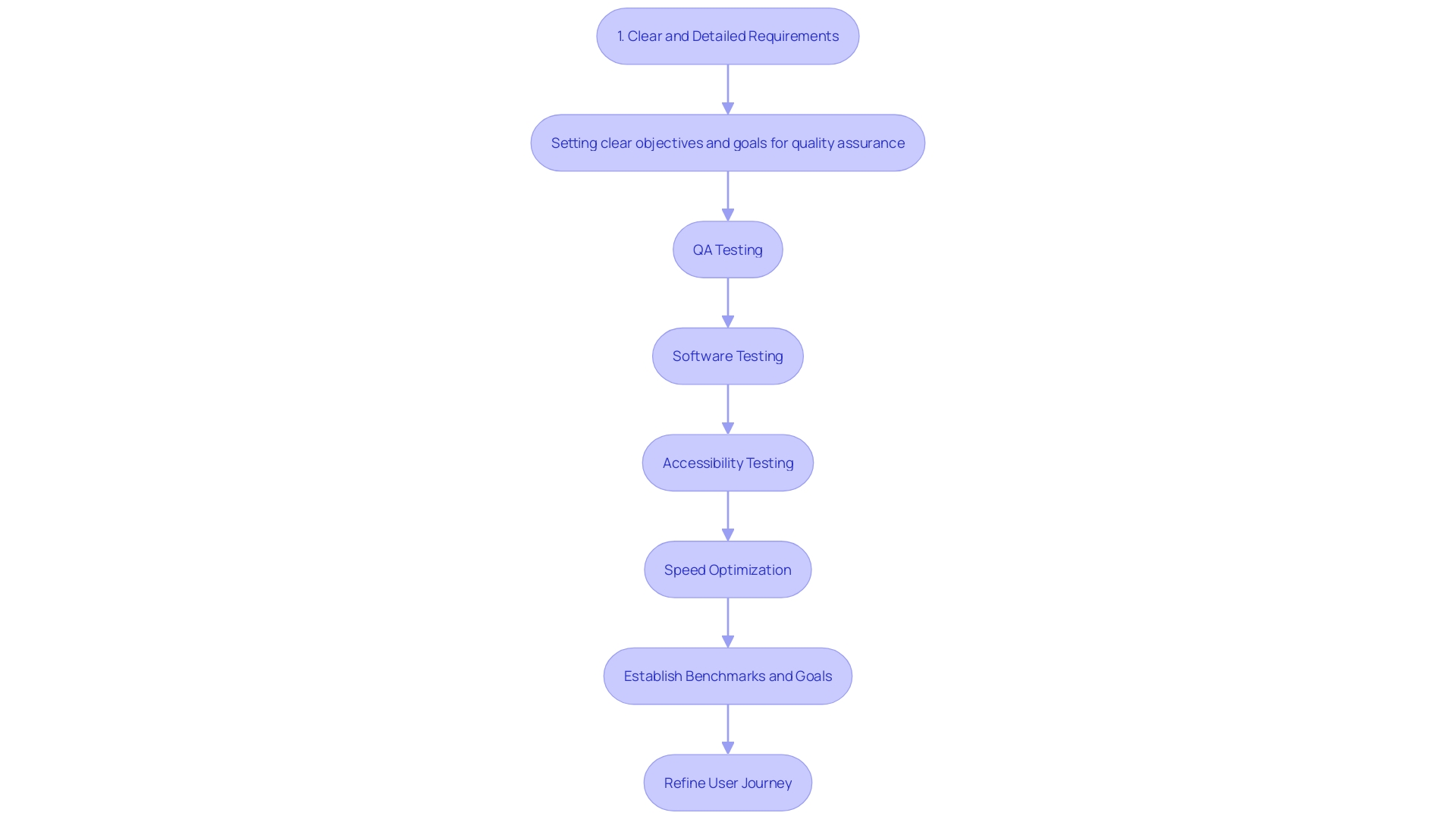
Preparing for Launch and Marketing
Completing your ecommerce platform and preparing for its release is no easy task. It's an intricate dance of robust testing, meticulous content optimization, and strategic marketing. Think of it as setting the stage for a grand performance where every element must harmonize to ensure a flawless debut.
Imagine you're Chess.com, with millions of daily engagements and a mission to serve chess enthusiasts globally. Similar to how Chess.com has customized its IT infrastructure to effortlessly manage extensive interaction, your Magento site must be meticulously optimized. This entails rigorous performance testing to avoid the pitfalls experienced by Tulio and Eric, whose WordPress site crashed during peak campaign traffic hours. Your online platform should be a well-oiled machine ready to deliver exceptional user experience, even under the strain of high traffic.
Content is king, and just as a comprehensive style guide helped CHI establish a unique voice, your website’s content needs to be compelling, search engine optimized, and reflective of your brand's ethos. Think beyond keyword stuffing; today's digital savvy shoppers seek informative content that addresses their queries and enhances their buying journey.
Analytics are the compass that guides your marketing strategies. By setting up advanced tracking, you can glean insights into consumer behavior, just as AI tools are employed by digital marketing experts to predict customer actions and personalize marketing efforts in real time.
When it comes to marketing, your launch should echo the significance of a company rebrand or major product introduction. It's not just about making noise; it's about resonating with your audience, delivering a clear message, and solidifying your presence in the ecommerce realm. Make sure to utilize all available resources, including social media buzz and email marketing campaigns, to guarantee that your store launch is not only noticed, but also memorable.
In essence, your preparation for launch should be backed by a solid business case, crystal-clear messaging, and a flawless execution strategy that positions your ecommerce platform as a leader from day one. With these elements in place, you're not just launching a digital platform; you're launching a brand legacy.
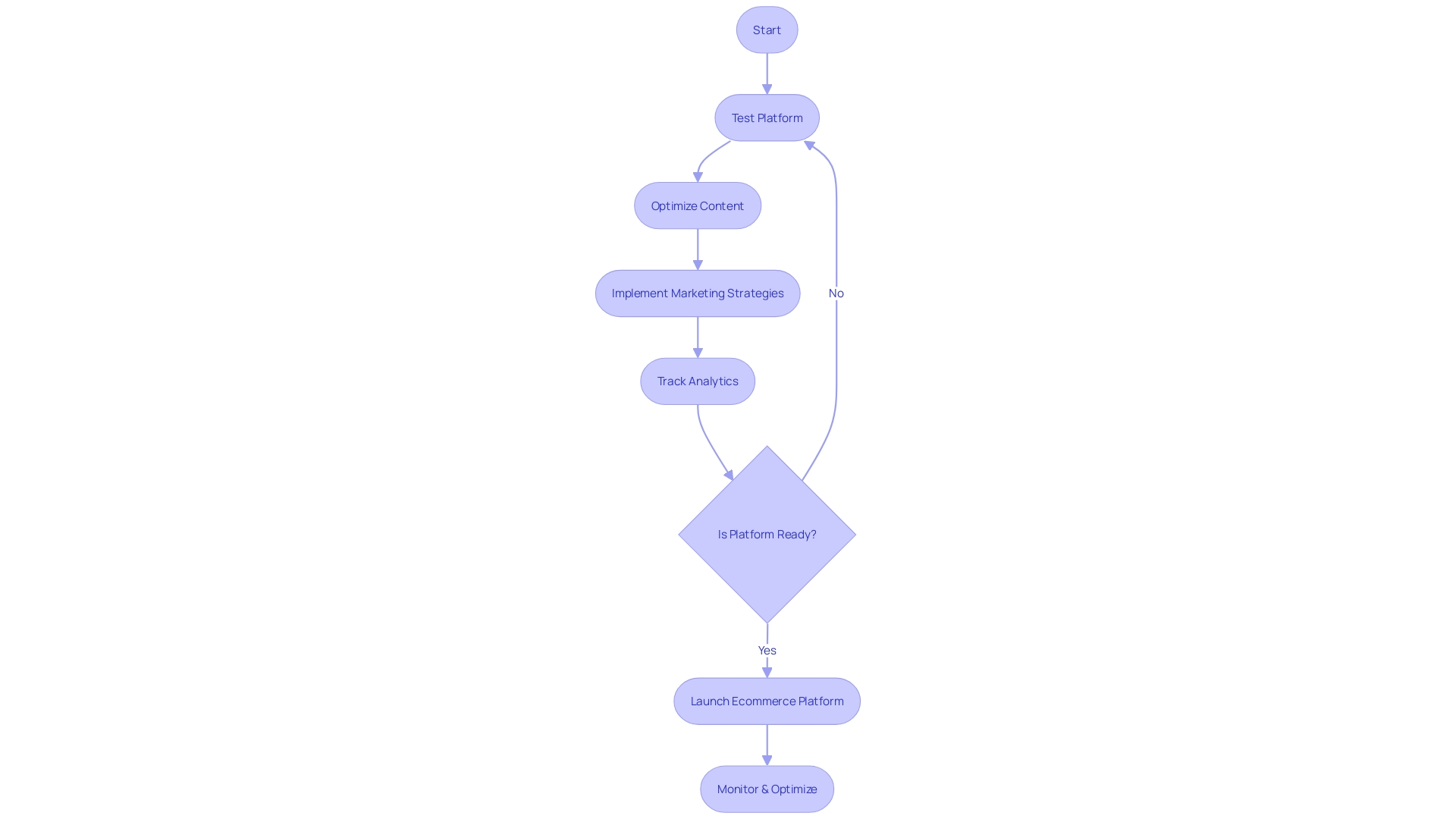
Optimizing Your Magento Website
Enhancing your Magento website encompasses a multifaceted approach that includes refining SEO tactics, curating a diverse content repertoire, and fortifying site security. A strong SEO foundation is built on the principle that quality content reigns supreme. Search engines favor sites that offer valuable and engaging content, so it's imperative to ensure your content is meticulously researched, current, and impeccably written. Expanding the range of content you offer, including blogs, videos, infographics, and podcasts, can accommodate different audience preferences, enhancing your reach and impact.
In the digital marketplace, web performance is not just about speed; it's about providing a smooth experience for individuals. To attain this, you must optimize your site's design elements like image sizes and code structure and select robust hosting and content delivery networks. Keep in mind, a rapidly loading site enhances experience for visitors, improves search rankings, and often leads to better conversion rates. The first step in this enhancement journey is to gauge your current site performance to identify the most impactful areas for improvement.
Security measures are non-negotiable in safeguarding your online presence. As e-commerce continues to burgeon, as evidenced by major online sales events like Amazon's Great Indian Festival, it's crucial to implement robust security protocols. This not only protects your business but also instills trust in your consumers.
In the vein of content creation, the concept of content velocity is noteworthy. The idea is simple yet powerful: the more content you produce, the more opportunities you have to rank for pertinent keywords. This strategy is essential for maintaining a competitive edge in the bustling e-commerce landscape.
SEO is an intricate dance between optimizing for search engines and crafting an exceptional user experience. As the digital market evolves with stories of innovation and entrepreneurship, like those spotlighted on platforms such as Flipkart, your e-commerce site must adapt to these dynamics. By focusing on these aspects diligently, you can ensure your online platform stands out in an increasingly crowded and competitive digital ecosystem.
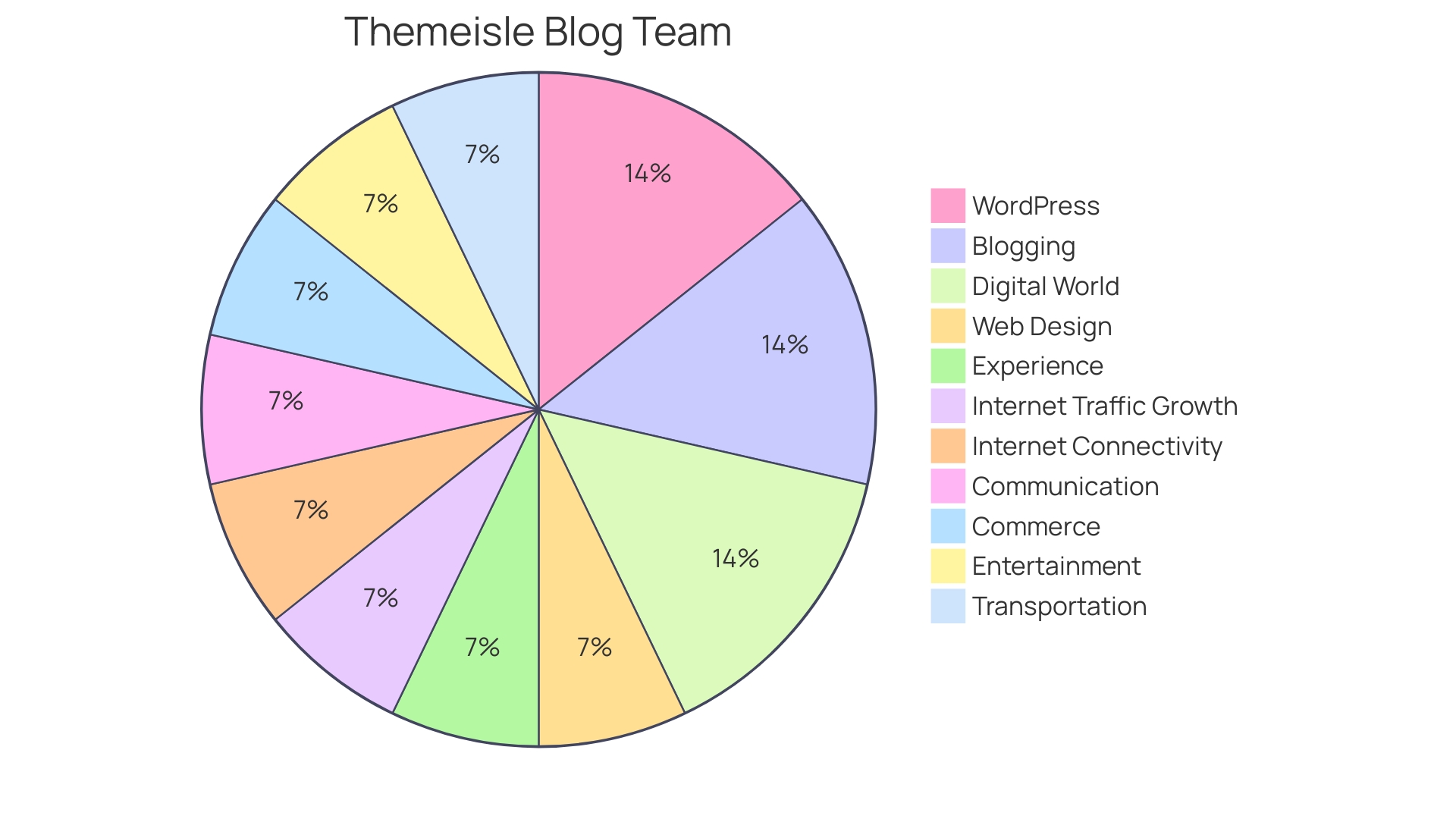
Assembling Your Magento Development Team
Forming a skilled development team is a crucial step for the success of your e-commerce website. It involves identifying the right mix of skills and roles that are fundamental to a successful e-commerce platform operation. On one hand, full stack development is crucial, according to Ashish Aggarwal, a computer science professor at the University of Florida. This covers both front-end aspects, such as implementing UX and UI, and back-end development, which involves business logic and data processing through databases and APIs. A Magento team should, therefore, have experts adept in both areas to ensure a robust and seamless e-commerce experience.
In addition to development skills, the instructional design approach used by Karmela PeÄek at eWyse Agency highlights the importance of presenting technical data in a user-friendly manner. This is essential in e-commerce, where clear communication of product information can greatly impact engagement and conversion rates. Given the secretive nature of conversion rate benchmarks, as noted in industry statistics, it's clear that having a team that can optimize user experience to boost conversions is invaluable.
When considering whether to build an in-house team or outsource, it's important to weigh factors such as the control over the project against the potential cost savings and access to specialized skills. Companies like Nets demonstrate the value of a well-integrated team that can handle complex technical challenges and present data effectively, which is a testament to the benefits of a cohesive in-house approach.
However, the evolving nature of e-commerce, underscored by the insights from the Head of Enterprise, EMEA at Shopify, suggests that a flexible and modern commerce architecture is necessary. This may involve leveraging external expertise to transition from legacy systems to more efficient, composable platforms.
Ultimately, the decision between in-house and outsourced Magento development should align with your business's specific needs, considering factors like project management, security integration as suggested by Tom Group, vice president of security services at Edge, and the overall strategic direction of your e-commerce venture.
Conclusion
In conclusion, creating a successful Magento e-commerce website requires careful planning, choosing the right Magento edition and hosting solution, designing with a focus on user experience, developing with customization in mind, conducting thorough testing and quality assurance, preparing for a flawless launch and implementing effective marketing strategies, optimizing the website for better performance and security, and assembling a proficient Magento development team.
By setting clear business objectives, understanding the target audience, and staying informed about industry trends, you can lay a strong foundation for your Magento website. Choosing the right Magento edition and hosting solution ensures reliability and scalability, while a well-designed website strikes the balance between visual appeal and seamless user experience.
Leveraging the customizable features of Magento during the development phase, along with thorough testing and quality assurance, guarantees that your website meets user expectations and industry standards. Preparing for launch involves rigorous testing, optimizing content, and strategic marketing efforts to make a memorable debut in the online marketplace.
Optimizing your Magento website involves enhancing SEO tactics, diversifying content, and fortifying site security to attract more visitors and protect your business. Lastly, assembling a proficient Magento development team, whether in-house or outsourced, ensures the expertise needed for a successful e-commerce website.
With a clear vision and following these steps, you can position your Magento website for success in the competitive online marketplace. By prioritizing user experience, staying updated with industry trends, and implementing effective strategies, your Magento e-commerce website can thrive and drive your business towards growth and prosperity.





